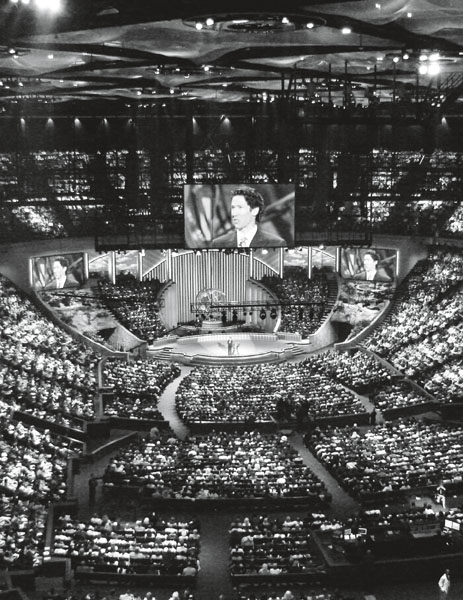

THE IMMENSE HISTORY of American ritualism has barely been explored in this visual tour. The fraternal pantleg has been rolled up, the calf exposed, and the hoodwink lifted, but many caverns remain. One could tunnel for years and still find forgotten routes and Lodge lore lurking behind another everyday facet of life, bypassed because it is simply common.
What happened to the Lodges? Many still exist but membership has undeniably declined. Brother Mark Stavish hopes that an energized core of occultists will bring a new energy to the scene and rejuvenate the real meaning—the esoterica behind it all. Everyone admits that on Lodge Night, things are not what they used to be. The members are fairly old and knife-and-fork Masons seem the norm. Meals mean more than mysticism.
Today’s individualist, anti-traditional, and anti-ritual tendencies are reflected in informal church services, in which the faithful gather with a Starbucks frappuccino in hand and watch PowerPoint presentations at megachurches, or at home on YouTube.
The old, ponderous requirements of initiation have been greatly reduced. Elaborate costumes are now seldom employed. Where degree advancement once required a great deal of study and application, one can now sail upwards in one afternoon—even soar up to the 32nd degree in a day in some cases. The requirement for joining the Shriners—32nd degree first—has seen the entry bar lowered to the Third Degree. The O.T.O. originally required Master Mason status first; now, members need not bother. Brotherhoods have adapted themselves to the fast and easy to acquire members.
The New Thought movement was a perfect marriage of the twin tendencies of anti-ritualism and individualism. It came out of the lodges or was born in many of them, end emphasized that magick needed no real ritual. New Thought started a trajectory in the esoteric which has merged with a fragmenting of communities to give us preachers of The Secret on Oprah, wherein one can gain initiation simply by watching a screen, or simply by believing in one’s wish. The result was a fast-food fraternalism: a type of no-frills modern magick faith, created to fit anything.
Such prosperity consciousness made Lodge meetings unnecessary. Through the teachings of Wayne Dyer or Tony Robbins one could download enlightenment like an app.

The bestselling book Bowling Alone, by professor Robert D. Putnam, discusses the continuing collapse of civic engagement among Americans, a trend that has impacted membership in fraternal lodges. Writes Putnam:
“Let us sum up what we have learned about the factors that have contributed to the decline in civic engagement and social capital....
“First, pressures for time and money, including the special pressures on two-career families, contributed measurably to the diminution of our social and community involvement during these years. My best guess is that no more than 10 percent of the total decline is attributable to that set of factors.
“Second, suburbanization, commuting, and sprawl also played a supporting role. Again, a reasonable estimate is that these factors together might account for perhaps an additional 10 percent of the problem.
“Third, the effect of electronic entertainment—above all, television—in privatizing our leisure time has been substantial. My rough estimate is that this factor might account for perhaps 25 percent of the decline.
“Fourth and most important, generational change—the slow, steady, and ineluctable replacement of the long civic generation by their less involved children and grandchildren—has been a very powerful factor…”
Professor Putnam’s book, written in the 1990s, missed newer trends, the dominance of Internet culture and electronic devices, such as iPods and smartphones, which appear to have increased the public’s sense of isolation (despite the incidental hype of flash mobs and Facebook’s influence of riots and disorder in the Middle East). The acceleration of technology plugged people into a variety of virtual rather than physical communities. Rather than working on the Sanctuary of the Gnosis in the O.T.O., one could simply join a Facebook group.
And yet the communities continue, whether the Congregational Illuminism of former O.T.O. luminary Allen Greenfield, who had it with the O.T.O. and is running a different structure outside of those Lodges—or simply a gathering at a sports bar, which can be seen as the modern-day Lodge, or a Lady Gaga concert. Americans aren’t free of rituals; they’re simply varied, and their targets fail to notice the impact upon their psyches. The vulnerability to unconscious group processing, perhaps most obviously manifested in the ritual stage show of a presidential election.
Are these signs that secret societies are no longer relevant? Or could it be taken for the opposite: that Masonic principles are so ingrained that the structural cells aren’t considered necessary. Perhaps the country is hoodwinked, and the cable-tow around the American neck is now so virtual that it remains barely noticed.
